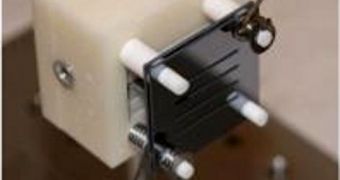The US Air Force has recently begun taking an active interest in the development of electrically-powered space thrusters of very small sizes. The idea behind this is to create new alternative to conventional, chemicals-based propulsion systems that could be employed on very small satellites, such as the CubeSat. This would allow the spacecrafts to perform a series of intricate maneuvers in orbit, including avoiding space debris and positioning itself in more advantageous orbits. Additionally, the new thrusters could theoretically be used for hunting exoplanets with more efficiency.
In order to achieve this goal, expert Dr. Paulo Lozano, and his team at the Massachusetts Institute of Technology (MIT), are currently investigating possible means of designing such small-scale propulsion systems. Their work is being sponsored with funding secured from the Air Force Office of Scientific Research. Thus far, this line of study has been fairly fruitful, with the team developing “ionic liquid ion sources,” which are materials that will in the near-future set the foundation for the new mini-thrusters.
“Fast-moving ions coming out from the mini-thrusters can be used to etch semiconductors to create patterns in the nanometer scale, to fabricate computer chips or small mechanical devices,” Lozano says of the other possible uses for the technology the MIT group is developing. He explains that, in the case of thrusters that will make it into space, the main goal for him and his team is to understand the properties necessary for spacecraft to accurately and efficiently change orbits when the need arises. The expert adds that the scientists are also investigating mechanisms that would allow for a spacecraft to self-destruct when entering the planet's atmosphere, so as to avoid creating new space debris.
According to Lozano, the new technology is not very far away. The MIT group will most likely construct a working prototype within five to six months. If these early attempts are successful, then the new propulsion method could be employed in real, live spacecrafts in as little as two years. The scientist adds that the team has a lot of work ahead, in determining the maximum thrust capabilities and efficiency of the new engines. But all of this investigation will only be possible once a prototype is built. While this is happening, the MIT group will investigate how to best integrate these new devices into existing space flight hardware, ScienceDaily reports.

 14 DAY TRIAL //
14 DAY TRIAL //